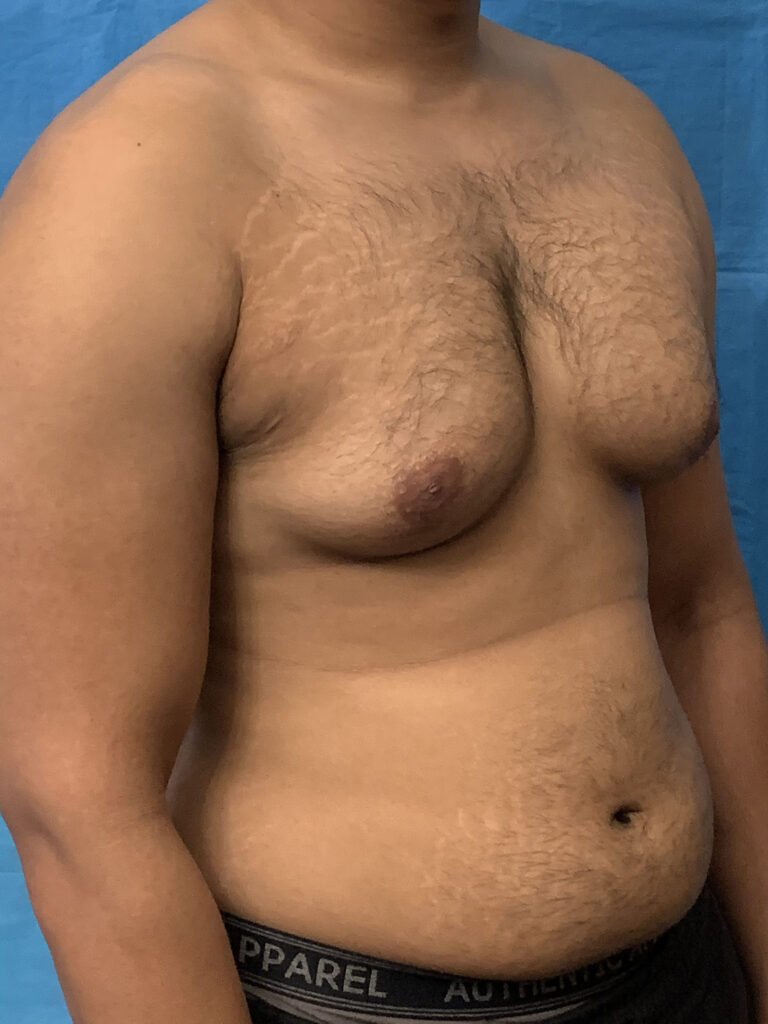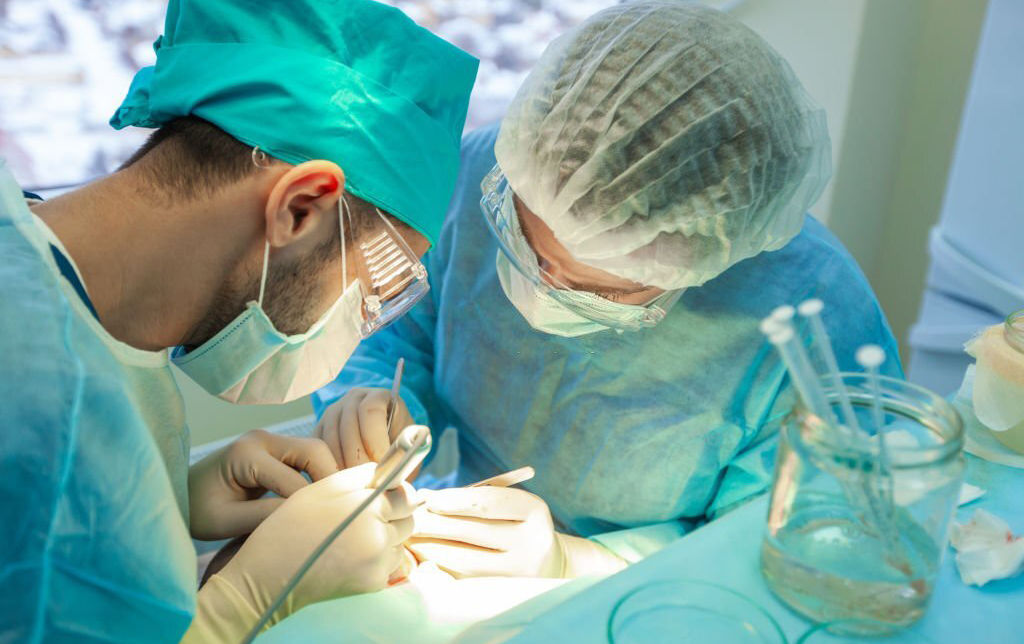Blogs

Understanding and Treating Gynecomastia: A Comprehensive Guide
Gynecomastia is a medical condition characterized by the enlargement of male breast tissue. Affecting up to 60% of males at some point in their lives, gynecomastia can lead to significant emotional distress and impact daily activities. Men with this condition often feel self-conscious and may avoid situations that require them to remove their shirts, such as swimming or changing in locker rooms. This comprehensive guide will delve into the causes, classifications, diagnosis, and treatment options for gynecomastia, with a focus on the advanced surgical solutions available at Saundarya City in Nagpur.
Causes of Gynecomastia
Gynecomastia primarily results from an imbalance between the hormones estrogen and testosterone. While estrogen is commonly associated with female physiology, it is also present in males but in much lower quantities. Estrogen promotes the development of breast tissue, and testosterone generally counteracts its effects. Disruptions in this hormonal balance can lead to gynecomastia.
Excessive Levels of Estrogen
An increase in estrogen or a decrease in testosterone levels can cause breast tissue enlargement. This hormonal imbalance is common during puberty but can occur at any age.
Natural Hormone Changes
Hormonal fluctuations during infancy, puberty, and aging can lead to gynecomastia. For instance, male infants may experience breast enlargement due to maternal estrogen, and older men may develop gynecomastia due to changes in hormone levels.
Medications and Their Side Effects
Certain medications can induce gynecomastia by disrupting hormonal balance. These include anabolic steroids, anti-androgens used for prostate cancer, some HIV medications, anti-anxiety drugs, tricyclic antidepressants, antibiotics, and chemotherapy drugs.
Health Conditions
Several health conditions can contribute to gynecomastia:
– Hyperthyroidism: Excessive thyroid hormone can increase estrogen levels.
– Kidney Failure: Alters hormone levels.
– Liver Disease: Affects hormone metabolism.
– Tumors: Tumors in the testicles, adrenal glands, or pituitary gland can impact hormone production.
– Malnutrition and Starvation: Can lower testosterone levels while maintaining estrogen production.
Street Drugs and Alcohol
Substance abuse, including alcohol, marijuana, heroin, and amphetamines, can also cause gynecomastia.
Classifications of Gynecomastia
Gynecomastia can be classified based on the underlying cause and severity:
Primary Gynecomastia
Typically develops during puberty due to hormonal imbalances. It is characterized by an excess of estrogen over testosterone. In many cases, primary gynecomastia resolves on its own as hormone levels stabilize.
Secondary Gynecomastia
Affects men of any age and is often linked to weight gain. Known as pseudo-gynecomastia, it involves the accumulation of excess fatty tissue rather than glandular breast tissue.
Clinical Grading
Gynecomastia can be graded based on the severity of breast tissue enlargement and the presence of excess skin:
– Grade 1: Small growth with no extra skin.
– Grade 2: Moderate growth without excess skin.
– Grade 3: Moderate growth with some excess skin.
– Grade 4: Significant enlargement with substantial excess skin.
Diagnosis of Gynecomastia
Diagnosing gynecomastia involves a comprehensive evaluation by a healthcare provider, including:
– Review of Symptoms and Physical Examination: Detailed assessment of symptoms and a physical examination.
– Blood Tests: To evaluate hormone levels.
– Mammogram: To detect abnormal growths or changes in breast tissue.
– Ultrasound: To obtain detailed images of the breast tissue.
Treatment Options for Gynecomastia
Treatment for gynecomastia depends on the underlying cause and severity. In many cases, especially during puberty, gynecomastia may resolve on its own. However, medical or surgical intervention may be necessary for persistent cases or those causing significant distress.
Medical Treatment
Addressing the underlying health condition can often alleviate gynecomastia. Options include changing medications, treating thyroid dysfunction, or hormone therapy to balance estrogen and testosterone levels.
Surgical Treatment
For severe or persistent cases, surgery may be the most effective option. The goal of gynecomastia surgery is to remove excess breast tissue and, if necessary, excess skin to restore a more typical male chest contour.
Gynecomastia Surgery at Saundarya City
At Saundarya City in Nagpur, we offer advanced gynecomastia surgery performed by our expert surgeon, Dr. Suresh Chawre. The procedure involves:
– Anesthesia: Administered to ensure patient comfort.
– Incision: Made around the nipple or in natural chest creases to minimize visible scarring.
– Tissue Removal: Excess glandular tissue, fat, and skin are removed. Liposuction may be used in conjunction with excision techniques.
– Closure: Incisions are carefully closed to promote healing and minimize scarring.
Recovery After Surgery
Post-surgery, patients should rest and avoid strenuous activities to facilitate healing. Most can return to work within ten days, depending on their job nature. Common side effects like swelling, bruising, pain, and numbness are temporary and usually subside within weeks. The surgical scar, typically around the nipple, is thin and blends with the surrounding skin.
Risks and Complications
As with any surgery, gynecomastia surgery carries potential risks:
– Infection: Proper wound care is essential.
– Bleeding and Hematoma: May require additional treatment.
– Scarring: Some degree of scarring is inevitable.
– Changes in Nipple Sensation: May occur.
– Asymmetry: Rare but possible.
Psychological Impact and Support
Gynecomastia can profoundly affect psychological well-being, leading to embarrassment, anxiety, and social withdrawal. Addressing the condition through surgery can significantly improve self-esteem and quality of life. Patients should have realistic expectations and consider seeking psychological support if needed. Counseling or therapy can help individuals cope with the emotional aspects of gynecomastia and the changes resulting from surgery.
Gynecomastia is a common condition with a range of causes and treatment options. Whether addressing hormonal imbalances, managing medication side effects, or undergoing surgery, it’s essential to choose a qualified and experienced specialist. At Saundarya City, Dr. Suresh Chawre provides expert consultations and personalized solutions to meet each patient’s unique needs. For more information or to schedule a consultation, contact us today and take the first step toward a more confident you.
Popular Posts

Nose Surgery (Rhinoplasty)
Nose reshaping (rhinoplasty or a "nose job") is an operation to change the shape or size of the nose...

Best Hair Transplant Doctor In Nagpur Location
Saundarya City Uses Modern techniques have enabled advanced methods for surgical hair transplants that can help restore lost hair...



 Book an Appointment
Book an Appointment